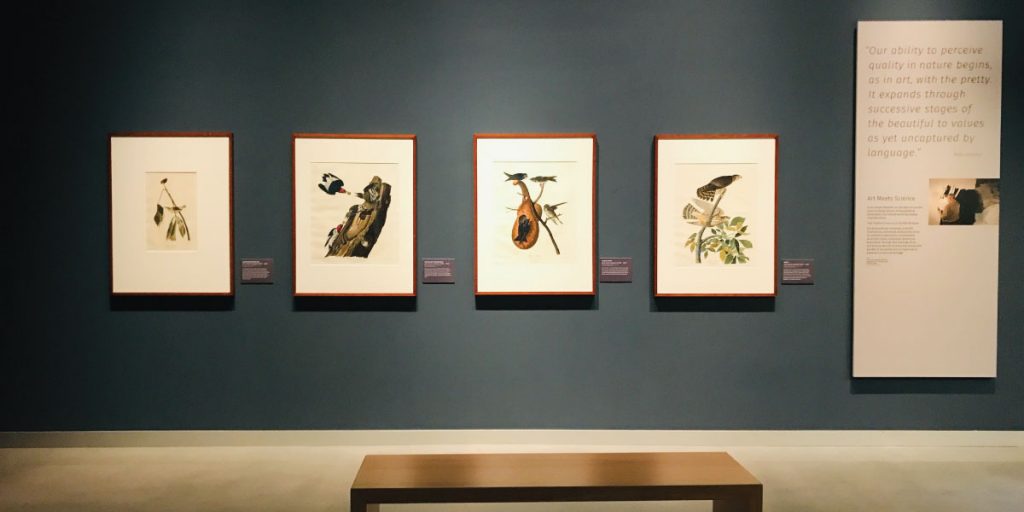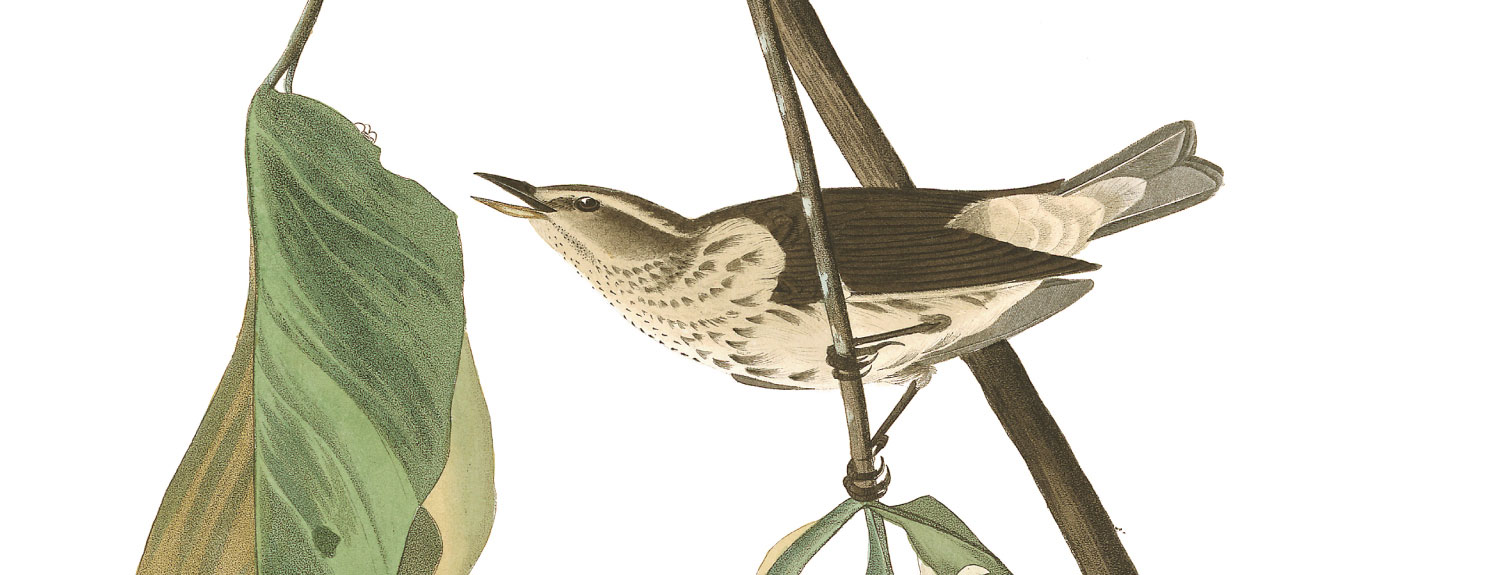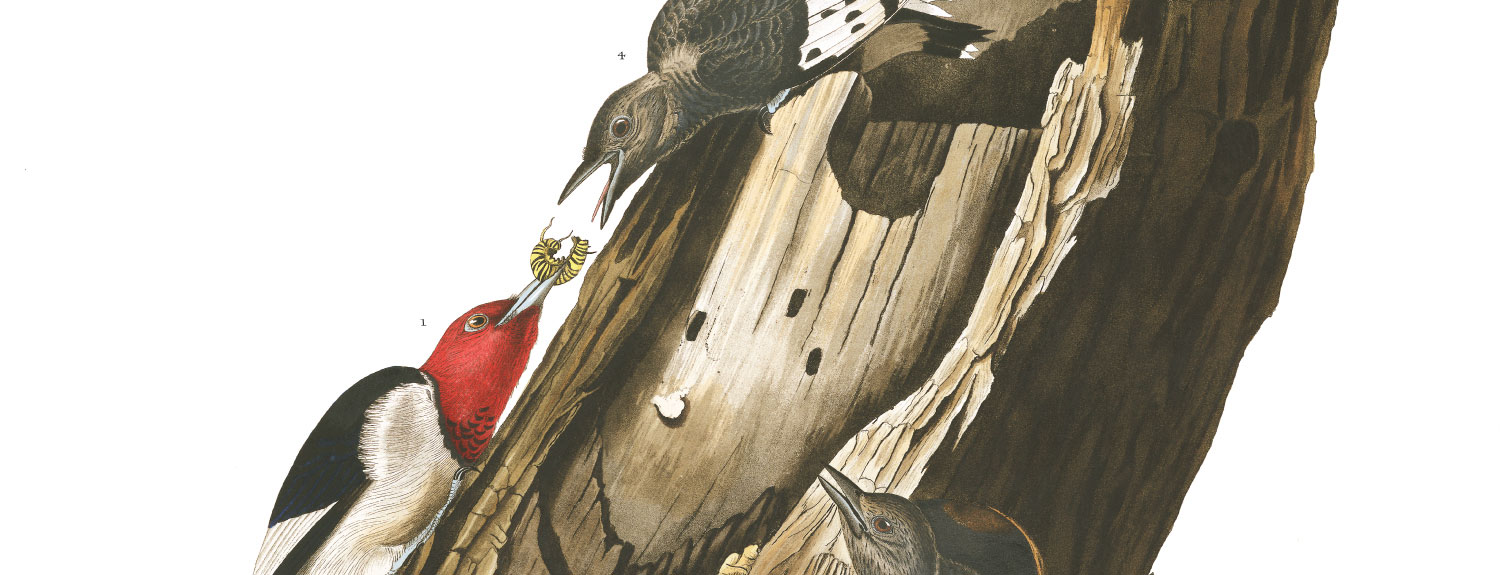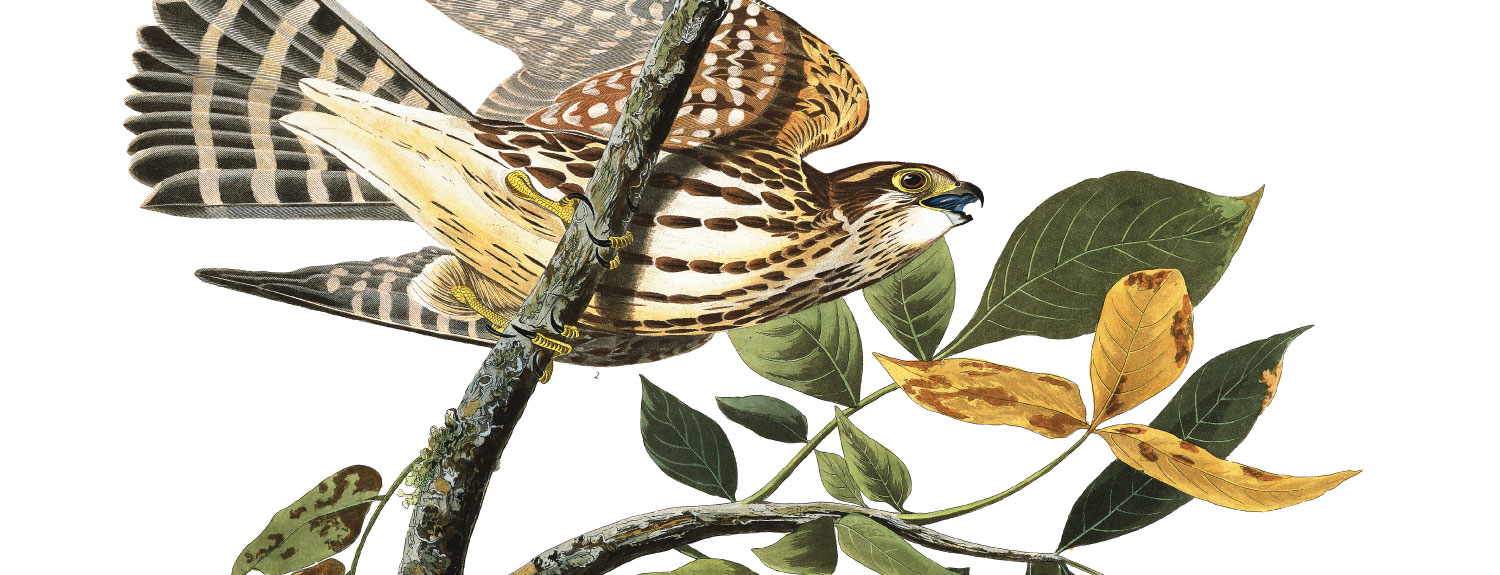
Conserving Audubon’s ‘Birds’
Select works now on view
Published03/01/2019 , by Don Luce
No single person better represents the integration of science, art, and nature than John James Audubon (1785-1851). A flamboyant and eccentric genius, Audubon suffered years of failure and hardship in the pursuit of his dream to document all the bird species of North America and paint them life-size and in color. He spent decades on the American frontier, observing, collecting, and drawing birds. The resulting paintings forever changed how we see and depict wildlife and nature. Audubon’s images were not only accurate in their details of anatomy and plumage; they are infused with energy, movement, and emotion.
The making of the Birds of America , often called the Audubon Folio, was itself an epic story. For over twelve years, from 1826 to 1838, Audubon worked with printers in Edinburgh and London to transfer his watercolor images to copper engravings. They used the largest paper available: double-elephant size (about 30×40 inches). Plates were printed in black, and then each print was hand-colored to match the original. The Folio includes 435 prints, usually bound into four volumes. It is considered one of the largest and most expensive books ever produced.
The Bell’s Birds
The Bell Museum’s copy of the Folio is one of only two in Minnesota, and one of about 100 complete sets still existing. Like most copies of the Birds of America, the set was originally bound in four large volumes, each weighing about 50 pounds. The set was bequest to the museum in 1928 by William Overton Winston. As concern over its value grew, it was transferred to the University of Minnesota Libraries’ rare book vault in 1955, where it remained for decades with no public display.
We are happy to report that our four year project to conserve, document, and properly store our Folio is complete! The project was funded by grants from the Institute of Museum and Library Services, the Martin-Brown Foundation, and the Aimee and Patrick Butler Family Foundation. Each print was cleaned, conserved and matted by the Midwest Art Conservation Center here in Minneapolis. The surfaces of each print were dry cleaned to remove grime, smudges and fingerprints. Residues of binding twine, adhesive and leather binding fragments were removed. The binding edge and other creases were flatted. Tears and losses were repaired and filled. The restored prints were hinged to all rag, acid free mat board.
The prints are now securely stored in four specially designed cabinets that seal the cases from the infiltration of moisture, dust, and pollutants. University of Minnesota Libraries also made scans of each print, which is available online to scholars and the public via the U Media Archive. Click here to view scans from our copy of Birds of America!

Time flies! Stop in and see these incredible works through May.
Special Display
Possibly the most exciting outcome of this project is the ability to periodically display selections from the Folio and other incredible works from our art collection. In honor of this mammoth conservation and digitization effort, four Audubon prints are now on view in the Minnesota Journeys exhibit as shown above. The prints will be on display through the end of May.
Learn more about these prints from Audubon himself by clicking on the images below. Plate 22 – Purple Martin (featured at the beginning of the post): “These birds are extremely courageous, persevering, and tenacious of what they consider their right.” — John James Audubon, Birds of America.




